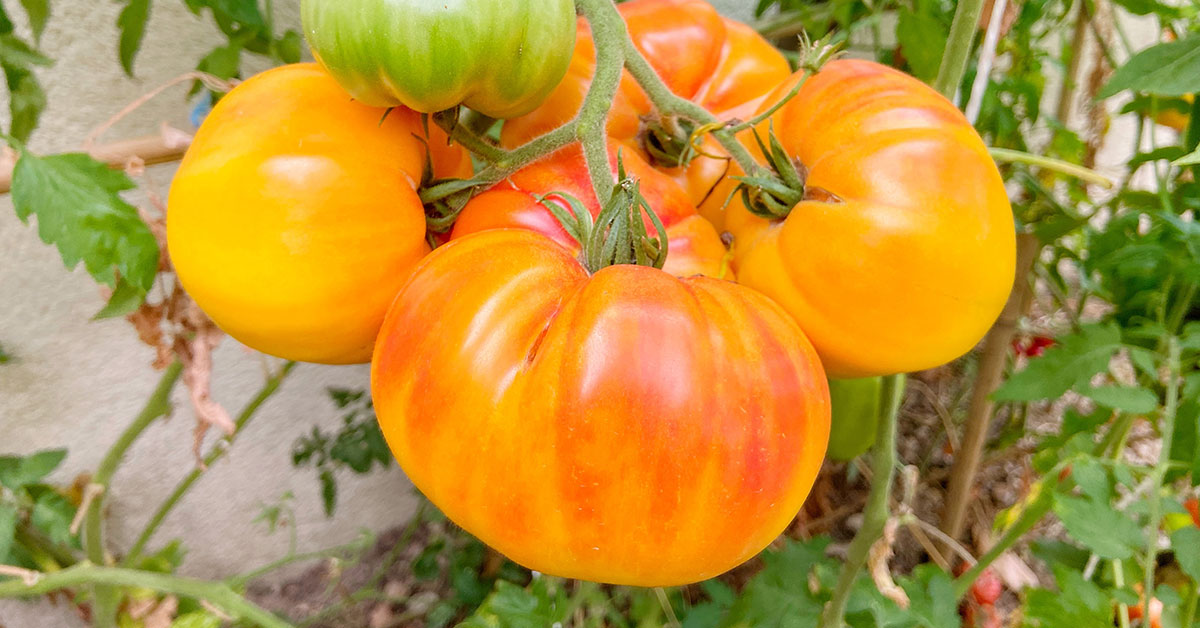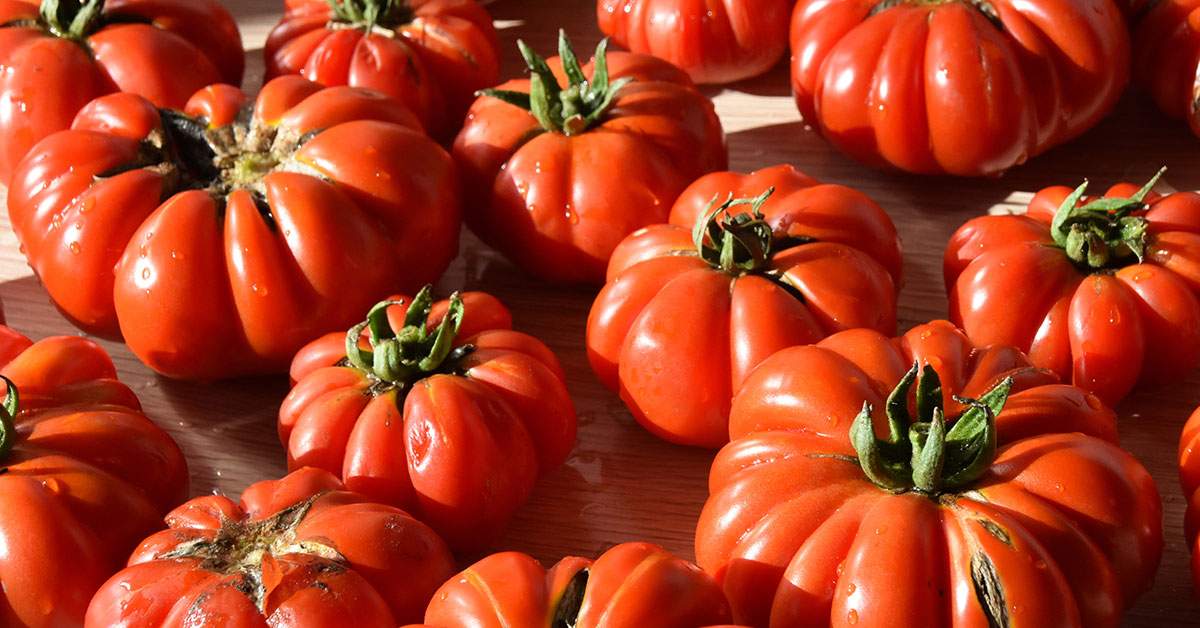Pineapple tomato is a unique and delicious variety of tomato that is gaining popularity in the culinary world. This heirloom tomato has a distinct yellow and red striped pattern that resembles the skin of a pineapple, hence the name. The fruit has a juicy and sweet flavor with a low acidity level, making it perfect for salads, sandwiches, and other culinary creations. In this blog, we will explore the characteristics, benefits, and uses of pineapple tomatoes to help you discover why they are worth trying in your next meal.
What is a Pineapple tomato?
Pineapple tomato is a type of tomato that is known for its unique shape and flavor. It is a large, beefsteak-like tomato that has a yellow and red striped skin, and has a sweet and tangy taste. The name “Pineapple tomato” comes from its resemblance to a pineapple in terms of its shape and color.
Pineapple tomatoes are a popular choice among gardeners and farmers due to their high yield and resistance to diseases. They are also rich in vitamins and antioxidants, making them a nutritious addition to any diet.
These tomatoes are best enjoyed fresh, sliced and served in sandwiches, salads, or as a garnish for various dishes. They can also be used in cooking, such as in tomato-based sauces or soups.
Overall, the Pineapple tomato is a unique and delicious variety of tomato that is a great addition to any garden or kitchen.
How to start Pineapple tomato seeds
Starting tomatoes from seed is a cost-effective and rewarding way to grow your own tomato plants. To begin, choose the tomato varieties that suit your preferences and growing conditions.
Fill seed trays or pots with a lightweight and well-draining seed starting mix, plant the seeds at the recommended depth, and provide adequate moisture and warmth for germination.
Once the seedlings have developed their second set of true leaves, they can be transplanted into larger containers or individual pots. Gradually acclimate the seedlings to outdoor conditions before transplanting them into the garden.
By following these basic steps, you can successfully start tomatoes from seed and enjoy a thriving crop of homegrown tomatoes.
Additional Resource: Our comprehensive guide to starting tomatoes from seed
Growing & care
Transplanting and caring for tomatoes outdoors involves a few essential steps. First, choose a sunny location with well-drained soil. Prior to transplanting, harden off the seedlings by gradually exposing them to outdoor conditions.
Dig a hole slightly larger than the root ball of each seedling and plant them, burying the stem up to the first set of leaves. Water the seedlings thoroughly after transplanting. Provide consistent watering, aiming for 1-2 inches of water per week.
Stake or cage the plants for support and prune indeterminate varieties by removing suckers. Monitor for pests and diseases, taking prompt action if necessary. By following these steps, you’ll set your tomato plants up for healthy growth and a fruitful harvest.
Additional Resource: How to transplant and care for tomatoes outdoors
Common tomato pests and diseases
Tomatoes are susceptible to various pests and diseases that can affect their health and productivity. Some common tomato pests include aphids, tomato hornworms, whiteflies, and cutworms. These pests can cause damage to leaves, stems, and fruit, leading to reduced plant vigor and yield.
Additionally, tomato plants can be affected by diseases such as early blight, late blight, fusarium wilt, and verticillium wilt. These diseases can cause leaf discoloration, wilting, and fruit rot. Proper identification and timely intervention are crucial to effectively manage these pests and diseases and ensure the successful growth of tomato plants.
Additional Resource: Comprehensive list of tomato diseases and pests and how to fix them
Common problems
Pineapple tomatoes are a delicious variety of tomato that is known for its sweet and tangy flavor. However, like all plants, pineapple tomatoes are susceptible to certain problems that can affect their growth and yield. Here are some of the most common problems that you may encounter when growing pineapple tomatoes:
- Pests: One of the most common problems with growing pineapple tomatoes is pests. Some of the pests that can affect pineapple tomatoes include aphids, whiteflies, and spider mites. These pests can damage the leaves and stems of the plant and can even cause the fruit to rot.
- Disease: Another common problem with growing pineapple tomatoes is disease. Some of the diseases that can affect pineapple tomatoes include blight, blossom end rot, and powdery mildew. These diseases can cause the leaves of the plant to turn yellow or brown, and can also affect the fruit.
- Environmental Factors: Pineapple tomatoes are also susceptible to environmental factors such as temperature, humidity, and soil conditions. If the soil is too wet or too dry, or if the temperature is too hot or too cold, the plant may not grow properly and may produce small or misshapen fruit.
- Lack of Nutrients: Finally, pineapple tomatoes may also suffer from a lack of nutrients. Tomatoes require certain nutrients such as nitrogen, phosphorus, and potassium to grow and produce fruit. If the soil is lacking in these nutrients, the plant may not grow properly and may produce small or tasteless fruit.
In order to prevent these problems from occurring, it is important to provide your pineapple tomatoes with proper care and maintenance. This includes providing them with adequate water and nutrients, keeping them free from pests and diseases, and ensuring that they are grown in the right environmental conditions. With the right care, your pineapple tomatoes can thrive and produce a bountiful harvest of delicious fruit.
Uses for Pineapple tomato
Pineapple tomatoes, also known as “Hawaiian Pineapple” or “Golden Pineapple,” are a unique variety of tomato that has gained popularity in recent years. This tomato is characterized by its yellow and red striped skin and its sweet, fruity flavor.
So what are pineapple tomatoes typically used for? While they can be eaten raw, like any other tomato, pineapple tomatoes are particularly well-suited for cooking due to their low acidity and high sugar content. Here are some ways you can use them in your cooking:
- Salads: Pineapple tomatoes add a pop of color and sweetness to any salad. Try using them in a Caprese salad, or mix them with other fruits like watermelon or mango for a refreshing summer salad.
- Salsas: The sweet flavor of pineapple tomatoes works well in salsas. Try mixing them with corn, black beans, and cilantro for a tasty dip for tortilla chips.
- Sauces: Pineapple tomatoes can be used to make a sweet and tangy tomato sauce that pairs well with grilled meats. Simply sauté some onions and garlic, add diced pineapple tomatoes and some tomato paste, and let it simmer until thickened.
- Grilled: Pineapple tomatoes hold up well on the grill, making them a great addition to kebabs or as a side dish. Brush them with olive oil and sprinkle with salt and pepper before grilling for a delicious smoky flavor.
Overall, pineapple tomatoes are a versatile ingredient that can be used in a variety of dishes. Their unique flavor and appearance make them a fun addition to any kitchen.













